A Kolkata home’s cavernous interior is dominated by curves
Cavernous is a Kolkata home by Nitin Barchha and Pooja Bihani designed around its curves

This Kolkata home is a contemporary experiment. How do the interiors of a home affect the psyche of its inhabitants? How can materials create moods to the extent that even sleep can be enhanced? These are questions with which interior designers and architects have long grappled, with each new project a further exploration of the nuances of the relationship between design and the occupants of the space. In this spacious apartment in one of the city's soigné neighbourhoods, a tall, double-height entry and disconnected rooms of varying heights, coupled with a client whose family business manufactures steel and TMT bars, provided its Mumbai-based architect Nitin Barchha of Studio Humus, and local interior designer Pooja Bihani of Spaces and Design the opportunity to craft an organic form that creates the illusion of weightlessness whilst harmonising the disparate spaces.

Desinging Cavernous, a modern Kolkata home
‘The clients wanted something unconventional and that shows the possibility of materials like cement and TMT bars, which are usually used to reinforce concrete,’ says Barchha.
Given the hard materials used – TMT bars, Ferrocement, microcrete, composite stone and Burmese teak – what’s striking about the apartment is how light the spaces are. This is largely because there are few straight lines to be found, Barchha and Bihani moulding curved shelves and desks out of sloping walls, winding arches over rooms, and dripping droplets of volumes from ceilings to divide rooms or create alcoves.

For both designers, the staircase – a freestanding helical shape that anchors the 22ft ceiling with a small conch-shaped bathroom tucked into its base – is the apartment’s tentpole feature. The dominance of curves is deliberate.
‘When we enter a curvilinear space, our subconscious associates it with the safety of the caves in which our ancestors lived,’ Barchha proposes, adding that the form also promotes deep sleep as it puts the cerebral cortex to rest from its perpetual state of alertness during the day.
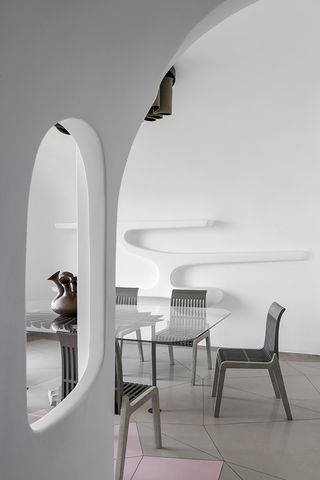
The result has intriguing elements of Zaha Hadid alongside the echoes of yposkafa (the white cave houses of Santorini, Greece), the Fred Flintstone residence, and Luke Skywalker’s homestead on Tatooine.
That the sinuous forms never descend into parody is due to the designers being clear of their intentions from the outset. ‘The whole idea of coming home was important,’ Barchha says. ‘Because of the high ceilings, we didn’t want it to be like an aerial, out-of-scale space.’
Wallpaper* Newsletter
Receive our daily digest of inspiration, escapism and design stories from around the world direct to your inbox.

Bihani adds that the design and construction teams spent many hours on site harmonising the different ceiling heights from passages into rooms.
‘Given the physical restrictions of the apartment, it was really difficult to integrate the angles and curves into a seamless form.’


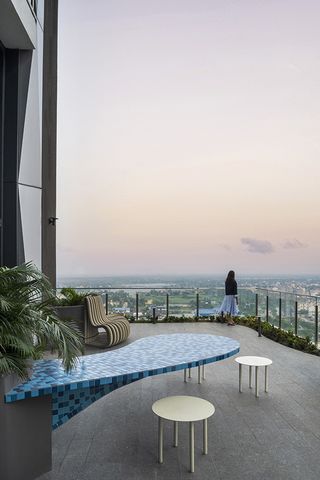
Daven Wu is the Singapore Editor at Wallpaper*. A former corporate lawyer, he has been covering Singapore and the neighbouring South-East Asian region since 1999, writing extensively about architecture, design, and travel for both the magazine and website. He is also the City Editor for the Phaidon Wallpaper* City Guide to Singapore.
-
 The best design-led cocktail shakers
The best design-led cocktail shakersIf you like your drinks shaken not stirred, these are the best cocktail shakers to take your mixology skills to the next level
By Rosie Conroy Published
-
 Tech Editor, Jonathan Bell, selects six new and notable Bluetooth speaker designs, big, small and illuminating
Tech Editor, Jonathan Bell, selects six new and notable Bluetooth speaker designs, big, small and illuminatingThese six wireless speakers signal new creative partnerships and innovative tech approaches in a variety of scales and styles
By Jonathan Bell Published
-
 As London’s V&A spotlights Mughal-era design, Santi Jewels tells of its enduring relevance
As London’s V&A spotlights Mughal-era design, Santi Jewels tells of its enduring relevance‘The Great Mughals: Art, Architecture and Opulence’ is about to open at London’s V&A. Here, Mughal jewellery expert and Santi Jewels founder Krishna Choudhary tells us of the influence the dynasty holds today
By Hannah Silver Published
-
 Remembering Christopher Charles Benninger (1942-2024)
Remembering Christopher Charles Benninger (1942-2024)Architect Christopher Charles Benninger has died in Pune, India, at the age of 82; we honour and reflect on his passing
By Aastha D Published
-
 A new exhibition marks Chandigarh’s modernist legacy
A new exhibition marks Chandigarh’s modernist legacy‘Celebrating the Capitol’, an exhibition of photographic work by architect Noor Dasmesh Singh, opens just in time for the famed modernist Indian city’s anniversary
By Ellie Stathaki Published
-
 Wallpaper* Architects’ Directory 2024: meet the practices
Wallpaper* Architects’ Directory 2024: meet the practicesIn the Wallpaper* Architects Directory 2024, our latest guide to exciting, emerging practices from around the world, 20 young studios show off their projects and passion
By Ellie Stathaki Published
-
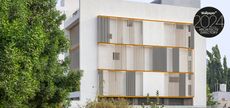 Playball Studio's architecture balances the organic and the technical
Playball Studio's architecture balances the organic and the technicalPlayball Studio, a young Indo-Spanish design practice, features in the Wallpaper* Architects’ Directory 2024
By Pallavi Mehra Published
-
 Peek behind the foliage at The Plumeria, a south Indian home by the water
Peek behind the foliage at The Plumeria, a south Indian home by the waterThe Plumeria by Silpi Architects is an India home in Kerala, the country's south, blending geometric forms and the region's tropical foliage and waters
By Ellie Stathaki Published
-
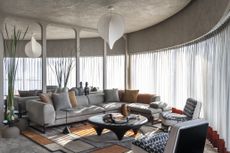 Step inside Le Harlequin, an imaginative redesign of a Mumbai apartment
Step inside Le Harlequin, an imaginative redesign of a Mumbai apartmentLe Harlequin by Design Hex is an imaginative redesign of a Mumbai apartment in the bustling Indian city's Lower Parel neighbourhood
By Daven Wu Published
-
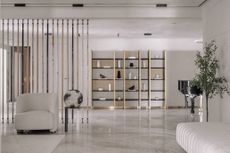 A Hyderabad apartment blends soft minimalism and ‘tangible luxury’
A Hyderabad apartment blends soft minimalism and ‘tangible luxury’A Hyderabad apartment by Studio Design Inc wows with its balanced design that brings together soft minimalism and tangible luxury
By Daven Wu Published
-
 Discover Third Space, a multifunctional hub in the heart of Rajasthan
Discover Third Space, a multifunctional hub in the heart of RajasthanThird Space by Studio Saar is a multifunctional creative and learning hub in the heart of Rajasthan, uniting the community through ‘openness, accessibility, and inclusivity’
By Ellie Stathaki Published